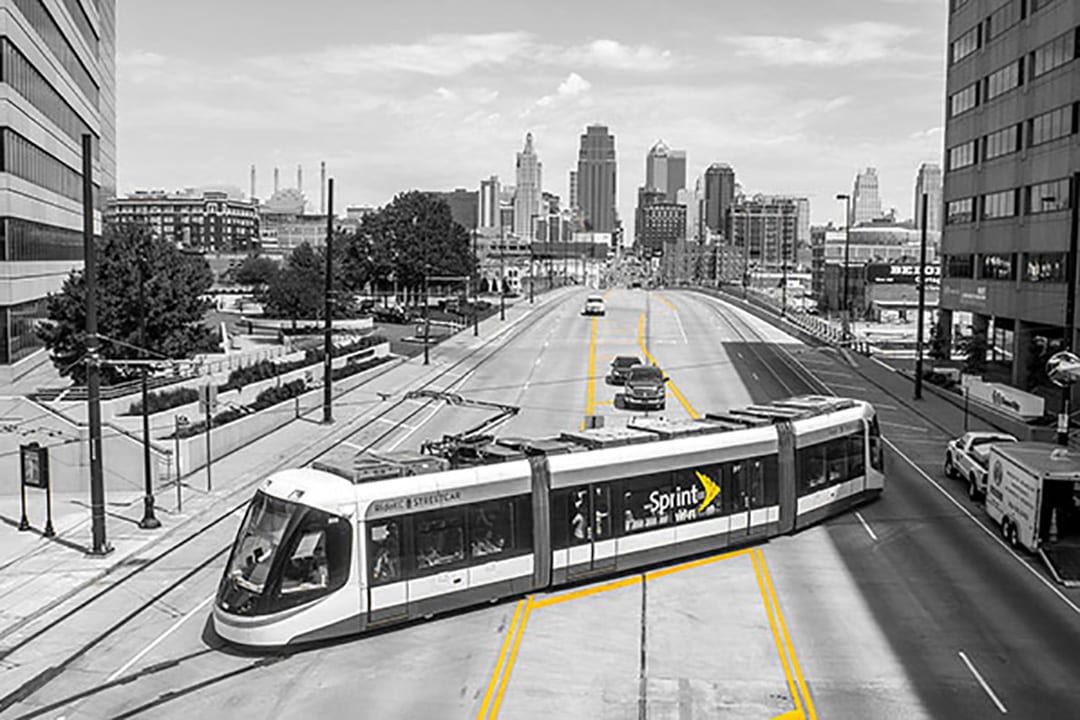BHC Knows Roads

Today road corridors are evolving at a lightning pace to keep up with the demands of modern technology. Gasoline and electric powered vehicles all share the same road. Autonomous cars are no longer a futuristic idea. People are becoming more conscious about their carbon footprint and look to alternative modes of transportation like bike, ridesourcing services or public transit like buses and streetcars. All of these considerations decide how we choose to design roadways and Complete Streets for our communities.
In growing communities, public officials often approach BHC seeking to conduct a traffic study. Our Professional Traffic Operations Engineers (PTOE) educate public officials and stakeholders on how to understand traffic patterns in their communities. Traffic studies can answer questions like “What roads are the busiest?” or “Are there any intersections that need improving?” By understanding the traffic capacity, officials can use a traffic study report to predict traffic trends and their needs when planning for an expanding infrastructure.
As our roads evolve, it is easy to miss some of the changes on the surface of roadways during your daily commute. Surface changes could include additions such as turn lanes, roundabouts and street lighting. Many of our recent Public Works projects include designs with less pavement to move traffic more safely and efficiently. Median turning lanes are an effective way to keep traffic flowing while allowing more space for infrastructure planning. Recently, European concepts have made their way across the pond to impact the way we plan Complete Streets making roadways multimodal for pedestrian, bike and vehicle users on the same road… at the same time… where cars travel around 12 MPH. We’re just going to leave that here.
So what lies beneath the surface of the roadway? Let us put an end to the mystery. There is more engineering and technology in the right-of-way than ever before.
We caught up with our Public Works Services Group Leader, Randy Gorton, P.E., PTOE to talk about roadway design. Jokingly, he compares the roadway design process to that of a game of Tetris – to create order out of chaos above and below the pavement. Our engineers must fit as many “blocks” as they can into an area by using well thought placement at a very fast pace.
Below the pavement are miles of underground utility conduits and drainage systems that include lines for telecommunication, cable television, fiber optics, electricity distribution, natural gas, traffic lights, street lights, storm drains, water mains, and wastewater pipes. All of these services compete for space and are strategically coordinated with local municipalities, utility companies and developers.
Underground utilities are an increasingly popular practice. Field experts have weighed in and most of them are on the fence about underground utilities versus above ground power lines. Debatably, underground infrastructure is resistant to outages due to wind and ice damage but are threatened by flooding and are costly to repair. Either way – planning and designing utilities is a crucial part of the corridor design process and such decisions are made on a case by case basis.
In summary, roadways don’t just appear overnight. Roadway design is a very strategic and involved process between civil engineers and the customer. We would also like to stress the importance of right-of-way managers and how they play into the design process. It is important for drivers, riders and pedestrians to understand roadway design and how to safely navigate when on the road.
BHC knows roads. We also understand that roadways directly impact the quality of life in the communities we live and serve. Roadway projects are generational investments and we design them that way. Our experts give special thought to the families and businesses who depend on our roads every day. Every day is a winding road and it is our promise to ensure that your roadway design is the best.
